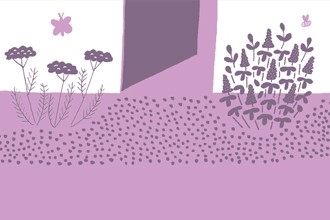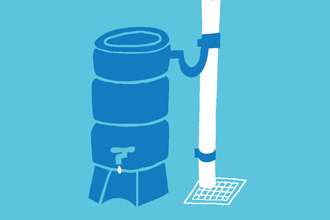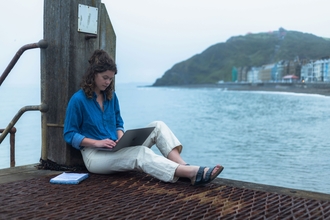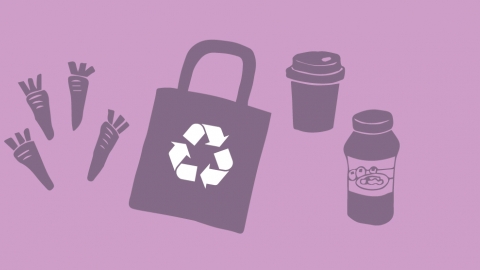
How to use less plastic
Plastic is choking our seas and natural world. It poses a huge threat to wildlife because it doesn’t just disappear; it simply breaks down into smaller and smaller pieces. Aside from the dangers of becoming trapped or injured, animals often ingest plastic fragments, with the potential to build up in the bodies of animals right up the food chain - from microscopic animals right up to large predators, including us!
You may already bring your own shopping bags and coffee cups, but there are plenty more small changes you can make to reduce your plastic footprint
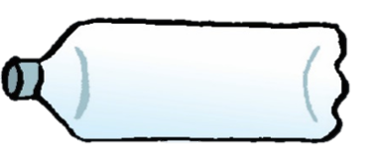
While recycling plastic is often hailed as a solution, it is estimated that only 9% of plastics ever manufactured have actually been recycled! Not everything you put in your recycling bin will get recycled either. The limited demand for products made from recycled plastic means that a large proportion of plastic sent to be recycled actually winds up getting burned or sent to landfill.
The good news is we can all do our bit to cut down on unnecessary plastic! Once you start looking, you might be surprised at just how much plastic is woven into our daily and weekly routines. You may already bring your own shopping bags, coffee cups and reusable bottles, but there are plenty more small changes you can make to shrink your plastic footprint!
Top tips to reduce your plastic use!
In the bathroom
Toothbrushes
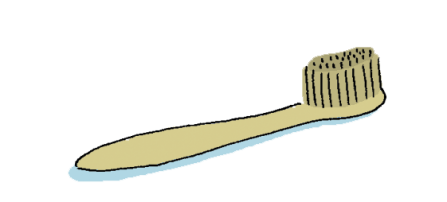
Chances are, you brush your teeth with plastic. Bamboo toothbrushes made from sustainable bamboo are an easy way to ditch the excess plastic. While the wooden handle is fully compostable (or upcyclable!), the plastic bristles will have to go in the bin, but fear not - they weigh practically nothing so they are far less wasteful than a conventional plastic toothbrush!
Prefer the electric experience? If you use branded replacement heads, check with the manufacturer - they may accept them back for recycling, and if they don’t, write to them!
In the shower
Exfoliating shower puffs might be a popular scrubbing tool, but they’re made of plastic. Specialist advice is to not use them at all, but if you must, to replace them every 3-4 weeks because of the nasty bacteria that can build up on the netting - that adds up to a lot of plastic waste! There are alternatives made from natural materials, but maybe it’s best to ditch them altogether.
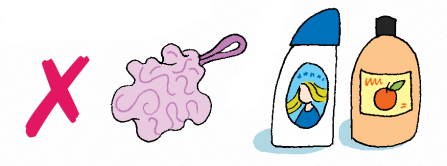
Keep an eye out for unpackaged bar soap and ditch the shower gel. Kept out of any water stream, they last a really long time! You can also get shampoo and conditioner in this form.
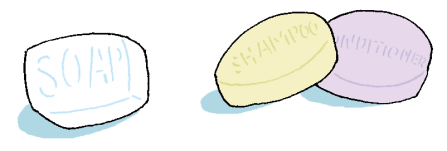
Clean shaving
Disposable razors amount to a huge amount of plastic waste, and aren’t easily recyclable. You could decide to let your hair grow wild, or if you prefer that clean shaven feel, traditional safety razors are a much longer lasting, sustainable option.
Cleaning
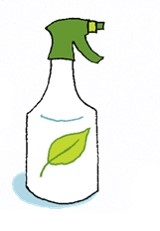
You should also keep a close eye on your cleaning products as they may contain sneaky microbeads not covered by the recent ban. Check product ingredients closely, especially items that claim to polish, add extra shine, or shimmer.
Hand washing
It’s such a simple change – using bar soaps instead of pump soaps – but it can make a big difference for wildlife. Using bars means no more bottles for your soap, reducing the amount of new plastic being made. This also cuts down your carbon footprint, since the manufacture of plastic creates a lot of CO2 emissions and liquid soaps have a 25% larger carbon footprint than bar soaps.
Using bar soap is easier on your wallet, too. Bar soaps are often cheaper than pump soaps, and you generally get more use out of a bar, so you won’t need to buy so much. It’s a win-win!
In the kitchen
Storing food
Cling film may be a food storage staple in your house, but it doesn’t need to be! Pop it in a reusable Tupperware box. Otherwise, beeswax (or soy wax) wraps do a great job of covering pots and bowls where a plate won’t do, and are also useful for wrapping foods like sandwiches and cut veg.

Washing up
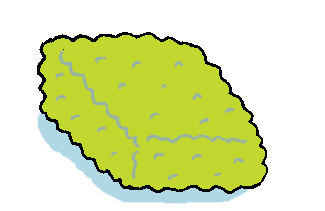
Some brands of washing up liquid allow you to refill your bottles once you run out, so it’s worth investigating your options and seeing if this is available to you. Kitchen sponges and scourers are usually made of plastic too. There are biodegradable options available made from natural materials, but, simply investing in a brush can make your sponges last far, far longer.
Make your own treats
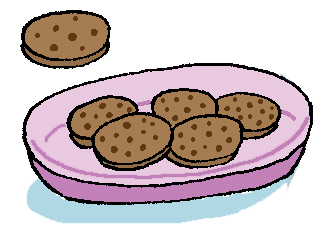
Bread, biscuits, cakes, and snacks usually come in throwaway plastic packaging, much of which can't be recycled. While it is possible to source these items without packaging in some supermarkets or bakeries, making your own is often cheaper, and more satisfying! There are plenty of recipes and tips available online to help you get started.
Alternatively, switching out that afternoon chocolate bar for a package-free apple or banana might just make you healthier too!
Out and about
Do a little preparation
Doing a little forward planning if you know you’ll be out for the day can make a big difference. By now we’ve all heard of the benefits of bringing our own coffee cups, shopping bags, and refillable water bottles. If you already do these things, then keep up the good work! Maybe it’s time to go one further and carry your own cutlery, or maybe a straw if you’d rather not skip it next time you’re out? Taking your own picnic can also help you avoid the pesky plastic of the meal deal.
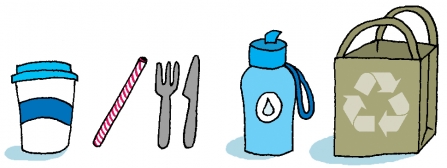
Food shopping
Certain items, like spinach, may be harder to find packaging-free, so it’s also worth finding out if you can get some from a local greengrocer, community allotments or farmer’s market and support your local economy. A few major supermarkets officially accept customers’ own containers for deli items, including meat, so it’s worth taking yours along and asking nicely!
With the rising demand for plastic-free groceries, many cities have seen their first bulk shops pop up. If you are lucky enough to live near one, buying dried goods like rice and spice often works out cheaper too!

One of the easiest ways to reduce your plastic consumption at the supermarket is by choosing loose produce over packaged. Because you only buy what you need, this will also help you curb food waste! You can also buy big. Large packs of things like biscuits, yoghurt, dried fruit, crisps etc. and pack them in small containers – this could save you money, too!
Take-away
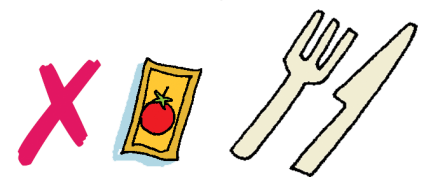
We all enjoy the occasional take-away meal, but it doesn’t have to come with its weight in throwaway plastic! If you’re ordering over the phone, ask if it’s possible to skip the cutlery or sauce sachets – every little bit makes a difference! By asking if your food is coming wrapped in plastic or polystyrene, it also shows businesses that it’s something its customers care about, and will drive change.
Drinks on the go
Cut down on plastic and help keep the planet clean by using reusable coffee cups.
A single, easy change can make a big difference. An estimated 7 million disposable coffee cups are used in the UK every day, and the majority of these are not recycled. But if we all simply use reusable coffee cups for our takeaway coffee, we can make a huge impact for wildlife on our doorstep and around the world, by slashing the amount of plastic we produce and use.
Sneaky plastics
Synthetic fabrics

Next time you’re doing your washing, take a peek at your clothing labels. Chances are a lot of your clothing is made of synthetic fabrics like polyester and nylon – all kinds of plastic. When you wash these, tiny microplastic fibres get washed down the drain and are too small to be captured by any water treatment. It’s estimated that a polyester fleece releases close to a million microfibres per wash!
Hand-washing synthetic fabrics significantly reduces the amount of fibres released, or if you’re reluctant to give up the convenience of the washing machine, shorter wash cycles, or purpose-made microfibre-catching laundry bags can minimise the impact. When buying new clothes, think twice about anything made with synthetic fabrics!
Vehicle tyres
A huge source of plastic in the environment comes from vehicle tyres shedding microplastics onto roads and getting washed into our drains. Vehicle tyres are mainly made from synthetic rubber – a type of plastic. So next time you’re heading out, think twice about taking the car, and ideally opt for walking or cycling. There are plenty of other health and environmental benefits to leaving the car at home too!
Teabags
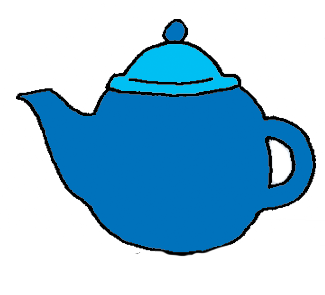
We all love a good brew, but many teabags have plastic woven into the fibres, or are sealed with a plastic based glue (something to be mindful of when composting!). Following public pressure, some companies have committed to eliminating plastic from their teabags, and some quick research will show you which brands are plastic-free.
Alternatively, buying loose tea can eliminate plastic packaging entirely – just be aware that many sold in cardboard boxes will be sealed in plastic inside the box to maintain freshness.

